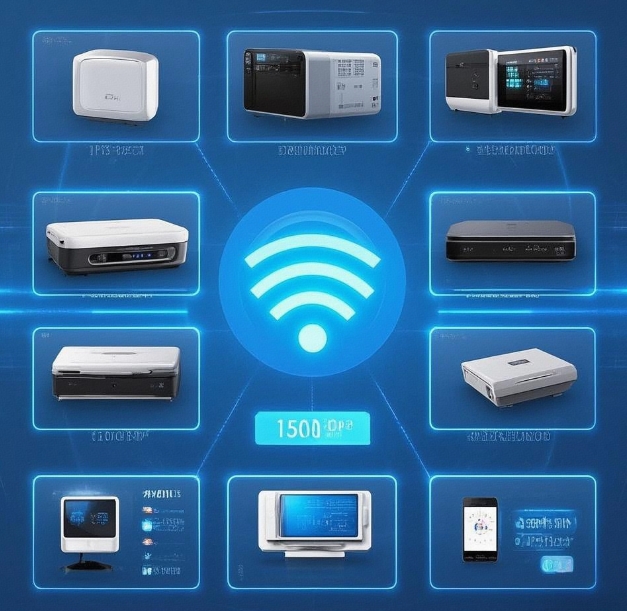Device Management and Monitoring System in IoT Development
- latest articles
- 1.DApp Development & Customization: Merging Diverse Market Needs with User Experience 2.Analysis of the Core Technical System in DApp Project Development 3.How to achieve cross-chain interoperability in Web3 projects? 4.How does the tokenization of points reconstruct the e-commerce ecosystem? 5.How to Set and Track Data Metrics for a Points Mall? 6.What is DApp Development? Core Concepts and Technical Analysis 7.Inventory of commonly used Web3 development tools and usage tips 8.Development of a Distribution System Integrated with Social E-commerce 9.Six Key Steps for Businesses to Build a Points Mall System 10.What is DApp Development? A Comprehensive Guide from Concept to Implementation
- Popular Articles
- 1.Future Trends and Technology Predictions for APP Development in 2025 2.Analysis of the DeFi Ecosystem: How Developers Can Participate in Decentralized Finance Innovation 3.From Zero to One: How PI Mall Revolutionizes the Traditional E-commerce Model 4.DAPP Development | Best Practices for Professional Customization and Rapid Launch 5.How to Develop a Successful Douyin Mini Program: Technical Architecture and Best Practices 6.Recommended by the Web3 developer community: the most noteworthy forums and resources 7.From Cloud Computing to Computing Power Leasing: Building a Flexible and Scalable Computing Resource Platform 8.Shared Bike System APP: The Convenient Choice in the Era of Smart Travel 9.How to Create a Successful Dating App: From Needs Analysis to User Experience Design 10.From Design to Development: The Complete Process of Bringing an APP Idea to Life
I. Overview of IoT Device Management and Monitoring Systems
1.1 Definition of Device Management and Monitoring Systems
In IoT systems, the device management and monitoring system refers to an integrated system that utilizes software, hardware, and network technologies to perform real-time monitoring, remote management, status detection, fault diagnosis, data collection, and other functions for IoT devices. This system ensures the efficient operation of devices and provides operators with comprehensive control capabilities.
Device management typically involves tasks such as device registration, configuration, upgrades, maintenance, fault diagnosis, and repair requests, while device monitoring involves real-time collection of device status information, such as temperature, humidity, energy consumption, etc., and uploading the data to a cloud platform or local server for analysis and processing. The combination of both enables comprehensive lifecycle management of devices.
1.2 Main Functions of Device Management and Monitoring
Device Registration and Configuration Management: Devices need to be registered when connecting to the IoT network to ensure their unique identifiers (such as device IDs) are correctly managed in the system. Configuration management involves managing initial settings and parameter adjustments for devices.
Remote Monitoring and Data Collection: The device monitoring function collects real-time status data (such as temperature, humidity, operating time, etc.) and transmits it to a monitoring center or cloud platform. Through centralized data management, real-time analysis of device operating status can be performed, enabling timely detection of device faults or anomalies.
Fault Detection and Early Warning: The device monitoring system can detect potential faults or abnormal conditions in advance by monitoring device operating status. By setting thresholds or using machine learning algorithms, the system can automatically identify device faults and trigger alarms, allowing maintenance personnel to take appropriate actions.
Device Maintenance and Management: IoT devices often require regular maintenance, such as firmware updates and component replacements. The device management system can automatically monitor device operating cycles, prompt maintenance schedules, and generate reports.
Data Analysis and Reporting: By analyzing data generated by devices, the device management and monitoring system can provide performance evaluations, trend analysis, and other insights for management personnel, helping decision-makers optimize device usage and management.
1.3 Architecture of Device Management and Monitoring Systems
IoT device management and monitoring systems typically consist of the following components:
Device Layer: This includes IoT hardware devices, sensors, controllers, etc., responsible for data collection and communication with backend systems.
Communication Layer: This layer serves as the information transmission channel between devices and the management platform, with common communication methods including Wi-Fi, LoRa, NB-IoT, Zigbee, etc.
Data Processing Layer: This layer is primarily responsible for real-time processing, analysis, and storage of data transmitted by devices. Cloud computing platforms or local servers typically handle data storage and processing tasks.
Application Layer: This layer provides user interfaces for device management and monitoring, allowing administrators to view device status, issue commands, or adjust configurations. Common applications include web interfaces and mobile apps.
Security Layer: Security measures in IoT device management and monitoring systems are crucial, typically including data encryption, identity authentication, access control, and other technologies.
II. Key Technologies of IoT Device Management and Monitoring Systems
2.1 Device Interoperability Technology
IoT devices often come from different manufacturers and use various communication protocols and data formats. To achieve interoperability between devices, device management and monitoring systems need to support the adaptation and conversion of multiple protocols. Common protocols include MQTT, CoAP, HTTP, Modbus, etc. Through protocol conversion gateways or middleware, devices can seamlessly connect in different network environments.
2.2 Big Data and Cloud Computing
IoT devices generate large amounts of real-time data, and efficiently storing and analyzing this data is a significant challenge for device management and monitoring systems. Cloud computing provides flexible computing and storage resources for IoT, enabling the processing of massive data and intelligent analysis. Through big data technology, patterns in device operation can be discovered, enabling device fault prediction, energy efficiency optimization, etc.
2.3 Edge Computing
Edge computing refers to moving data processing and storage from the cloud to locations closer to the devices (i.e., edge devices). This approach reduces data transmission latency between devices and the cloud, improving real-time performance and response speed. For device management and monitoring systems requiring immediate responses, edge computing technology is highly significant. For example, in intelligent transportation systems, edge computing can monitor traffic light status in real-time and make timely adjustments.
2.4 Artificial Intelligence and Machine Learning
Artificial Intelligence (AI) and Machine Learning (ML) provide intelligent decision support for device management and monitoring systems. By learning from and analyzing historical data, machine learning algorithms can predict device faults, optimize device operation strategies, etc. AI technology can also be used for automated operations, such as adaptively adjusting device operating parameters and automatically generating maintenance plans.
2.5 Security and Privacy Protection
The security of IoT device management and monitoring systems is crucial, especially against network attacks. The system must adopt robust security measures, such as end-to-end encryption, authentication and authorization mechanisms, and data privacy protection, to ensure the security of devices and data. Additionally, the storage and transmission of sensitive data must comply with relevant laws, regulations, and privacy protection standards.
III. Application Scenarios of IoT Device Management and Monitoring Systems
3.1 Smart Homes
In the field of smart homes, IoT device management and monitoring systems provide a more intelligent home environment through real-time monitoring of home devices. For example, devices such as smart thermostats, smart bulbs, and smart locks achieve remote control, automatic adjustment, and fault detection through monitoring and management systems, greatly enhancing user convenience and safety.
3.2 Smart Cities
The construction of smart cities relies on the management and monitoring of IoT devices. Through sensors and monitoring systems, various aspects of the city, such as transportation, energy, and environment, can achieve efficient intelligent management. For example, urban traffic signals can dynamically adjust based on real-time traffic flow, and streetlights can automatically turn on or off based on ambient light intensity.
3.3 Industrial Internet of Things (IIoT)
In Industrial IoT applications, device management and monitoring systems are used for real-time monitoring, fault diagnosis, and maintenance of factory equipment. By collecting operational data from devices, the system can assess device health, detect faults in advance, and perform repairs to avoid downtime losses. Additionally, IIoT can optimize production processes and improve efficiency.
3.4 Remote Healthcare
In remote healthcare applications, IoT device management and monitoring systems can monitor patients' vital signs in real-time, such as heart rate, blood pressure, and blood glucose levels, and upload the data to a cloud platform or medical center for analysis. Such systems not only improve the efficiency of medical services but also provide doctors with accurate remote diagnostic basis.
IV. Challenges and Development Trends of IoT Device Management and Monitoring Systems
Although IoT device management and monitoring systems have achieved significant application results in various fields, they still face some challenges during actual deployment and operation:
Device Standardization Issues: The wide variety of IoT devices and lack of unified standards lead to poor interoperability. In the future, promoting unified IoT device standards will be an important direction for development.
Data Privacy and Security Issues: Data collected by IoT devices contains a large amount of personal privacy information. Ensuring data security and user privacy remains an urgent problem to solve.
Network Bandwidth and Latency Issues: With the rapid increase in the number of IoT devices, data transmission demands also rise. Effectively managing bandwidth resources and reducing data transmission latency remain technical challenges.
In the future, IoT device management and monitoring systems will develop towards greater intelligence, integration, and automation. The introduction of new technologies such as artificial intelligence and edge computing will significantly improve the efficiency and intelligence level of device management. Meanwhile, with the popularization of 5G technology, communication speed and reliability between devices will be greatly enhanced, providing more possibilities for device management and monitoring.
Conclusion
As a core component of IoT technology applications, the development of IoT device management and monitoring systems directly impacts the efficiency, security, and scalability of IoT. With continuous technological advancements, device management and monitoring systems will gradually achieve greater intelligence and automation, driving various industries into a more efficient and convenient intelligent era. In the future, device management and monitoring systems will provide strong support for the further development of fields such as smart cities, smart manufacturing, and remote healthcare.
-

How to Use IoT Development to Enhance Supply Chain Efficiency
With the rapid development of the global economy and the deepening of digital tr···
-

Development and Innovation of the Internet of Things in the Healthcare Sector
With the rapid advancement of information technology, the Internet of Things (Io···
-

Data Storage and Analysis Methods in IoT Development
The Internet of Things (IoT) is one of the most revolutionary innovations in tod···

 Blockchain
Blockchain












